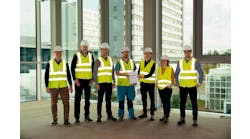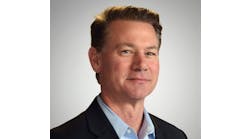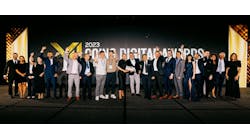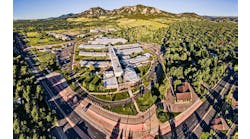“It’s a lot of process, and without technology, it’s impossible to take control.” Ventanas Port’s Eduardo Monsalve Stange discussed modernization of the Chilean bulk material port’s automation systems to PlantPAx from Rockwell Automation.
Freighter loading and unloading usually evokes images of containers and cranes, not a place for process control. But when the port caters to bulk materials industries, it looks a lot like a process plant, with conveyors, dust collectors, storage buildings and multimodal facilities spread over many acres. Such is the case at Los Ventanas, the largest port for bulk materials in central Chile, whose customers include mining companies, the concrete industry and the National Enterprise of Petroleum (ENAP). Its five-berth pier was built in stages beginning in 1967, with the latest addition being a warehouse and multimodal facility in 2016.
“Five years ago, the port was old and unsophisticated, but a new CEO’s strategic vision led to a continuing upgrade of infrastructure and technology,” said Eduardo Monsalve Stange, project manager, Ventanas Port S.A., who co-presented with the facility’s technical manager, Adolfo Salazar, at the Rockwell Automation Process Solutions User Group this week in Philadelphia.
The CEO-driven vision included “implementing a technological platform that unifies the operational processes of the port using information collected through intelligent cyber-physical systems and concentrated industrial servers,” Stange said. “Operational platform information would be sent to a control room so the personnel attending know the real status of each piece of operating equipment in the system.”
Along with the berths, the port includes 46 conveyor belts, 3,030 lineal meters of conveyor belts, more than 600 sensors, 3,000 hp of installed motor capacity, 27 pieces of quality assurance equipment and dust collectors, three multimodal reception areas (for trucks and trains), four warehouses totaling 190,000 tons of bulk material capacity, two bulk shiploaders, and two cranes used to level piles when loading boats.
Typical automation equipment ranges from pullcord switches, rate sensors, zero speed switches and emergency stops to level controls, belt alignment controls, damaged/ripped belt detectors, tripper position switches and local start/stop controls.
“It’s a lot of process, and without technology, it’s impossible to take control,” Stange said. “Our solution was to automate all the processes in the port using a PlantPAx DCS.”
Virtualized DCS becomes reality
“We began in 2016 by mapping the existing processes, detecting operating island units, and developing a unified control philosophy,” Stange said. “In 2017, we tendered and assigned integration responsibilities, and began the physical and digital implementation of the platform. In 2018, we trained, commissioned and ramped up the installation.”
When complete, the port storage and dock areas were covered by PACs on optical fiber in ring topologies, starting and ending at a central server hosting a virtualized PlantPAx DCS. “If a connection is lost at some point, the system sends the signal in the other direction and communication continues,” said Stange. “The virtualization was incorporated in a server that facilitated the migration process and will ease future expansions. The supervision system has direct connection to the controllers, with a control interface developed in the master processors. It contains the different operation routes or any sequence the operator may require.”
The installation has met the project expectations. “We’ve accomplished centralization and information acquisition, availability of dynamic indicators and reduced administrative and management time,” Stange said. “We’ve also seen synergies in management between areas and disciplines, more efficient use of resources (human, physical and economic), higher production without environmental damage, professional growth of our workers, and higher productivity.”
The next phase will introduce mobility for operators and ERP integration. As a result, Stange said, “The largest port in central Chili is now also its most modern.”
The editors of Control are on-site at Automation Fair 2018 to bring you breaking news, innovations and insights from the event. Once the event is over, they will put together a report featuring the top news. Pre-order your copy today.
[javascriptSnippet]





